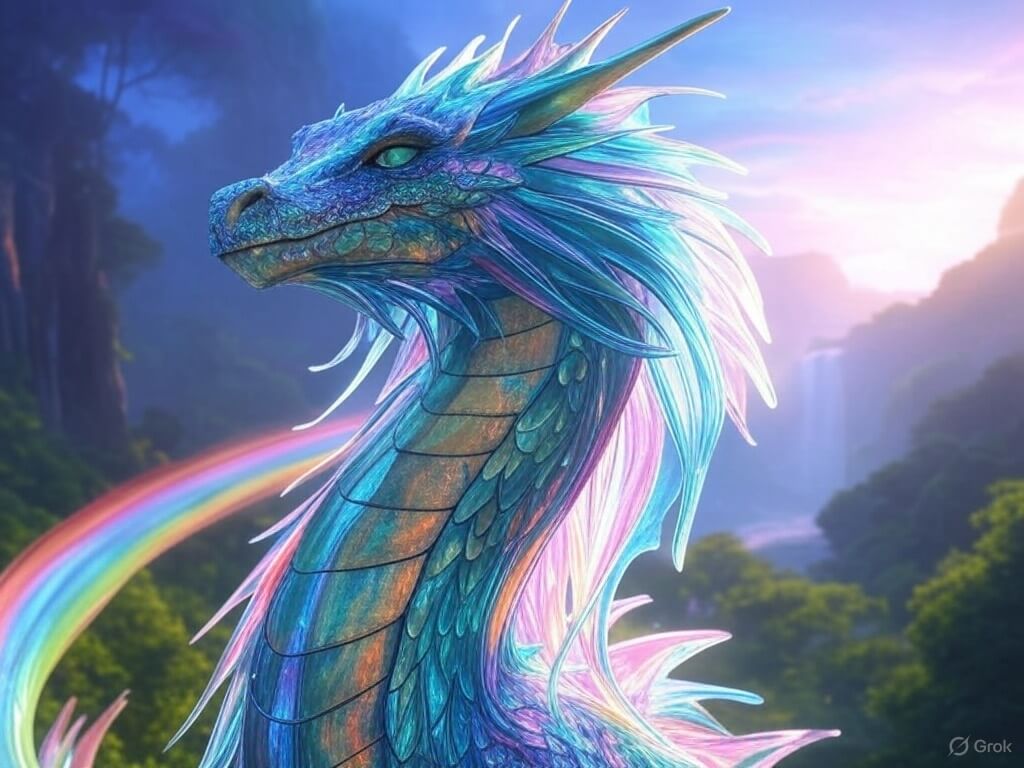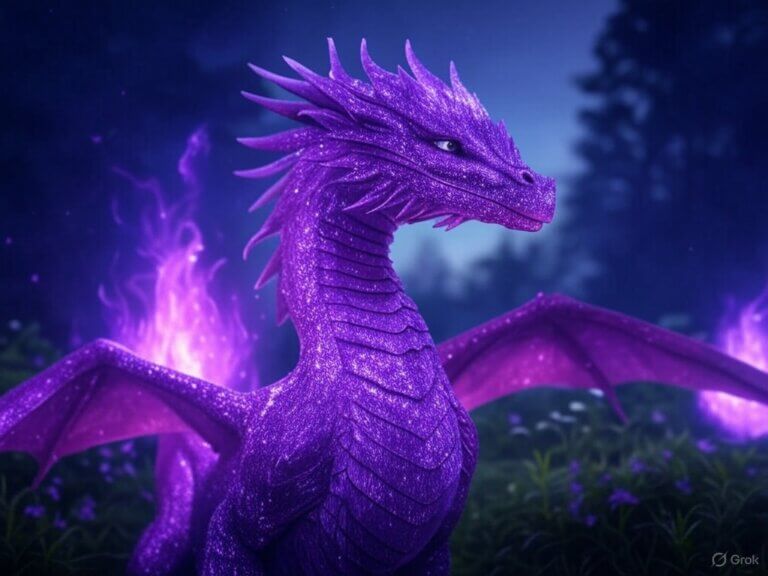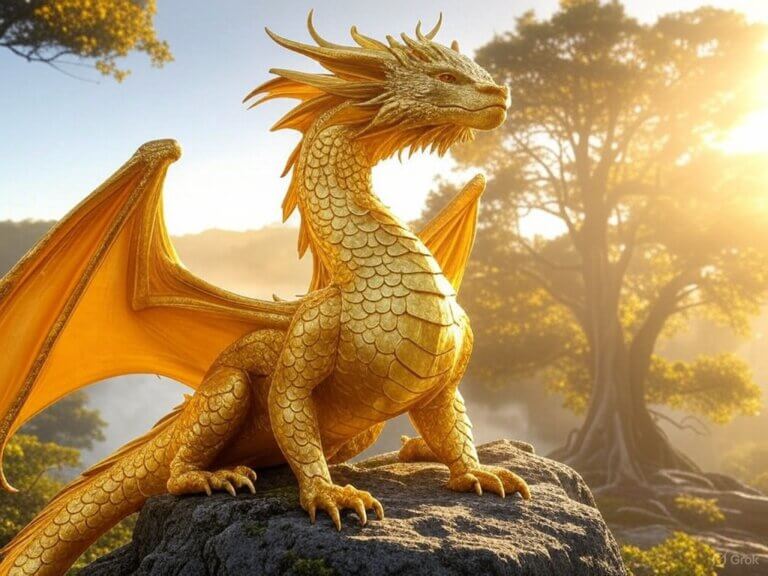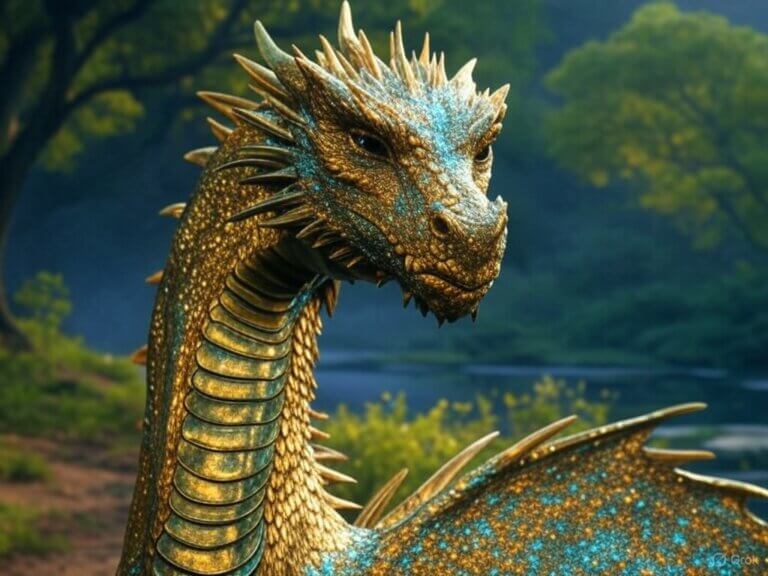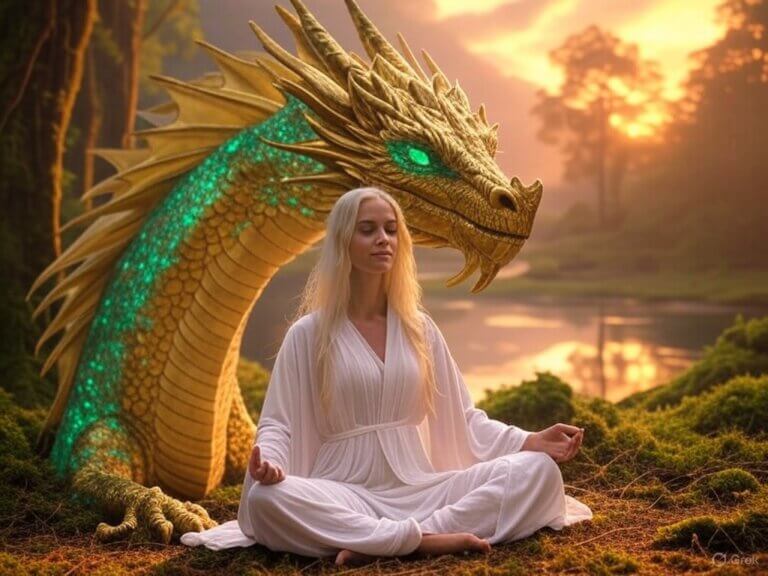The concept of a rainbow dragon is a captivating blend of mythology, symbolism, and imagination. These fantastical creatures, often depicted as majestic dragons adorned with vibrant, multicolored scales, carry profound meanings across cultures, spiritual beliefs, and creative expressions. This article explores the essence of rainbow dragons, delving into their origins, symbolic significance, cultural interpretations, and modern-day relevance.
Origins of the Rainbow Dragon
The rainbow dragon is not a singular figure rooted in one specific mythology but rather a fusion of dragon lore and the universal symbolism of rainbows. Dragons, as mythical creatures, appear in stories worldwide, from the serpentine deities of East Asia to the fire-breathing beasts of European folklore. Rainbows, similarly, hold sacred meaning in many traditions, often symbolizing hope, divine promise, or a bridge between realms. The rainbow dragon likely emerged from the creative synthesis of these archetypes, blending the dragon’s power, wisdom, and mystique with the rainbow’s vibrancy and spiritual resonance. While no single culture claims the rainbow dragon as a traditional figure, its concept thrives in modern fantasy, art, and spiritual communities.
Symbolism of the Rainbow
To understand the rainbow dragon, we must first unpack the symbolism of the rainbow. Across cultures, rainbows are seen as divine or magical phenomena. In Norse mythology, the Bifröst bridge, a rainbow, connects the mortal world to the divine realm of Asgard. In Christianity, the rainbow symbolizes God’s covenant with humanity after the Great Flood. Indigenous cultures, such as some Native American tribes, view rainbows as pathways for spirits or signs of harmony. The rainbow’s spectrum of colors—red, orange, yellow, green, blue, indigo, and violet—represents unity and balance, and the full spectrum of life’s energies. This vibrant symbolism forms the foundation of the rainbow dragon’s meaning.
The Dragon’s Archetypal Power
Dragons are among the most enduring mythical creatures, embodying a range of qualities depending on cultural context. In Chinese mythology, dragons are benevolent, associated with wisdom, strength, and control over natural elements like water and weather. In Western traditions, dragons often represent chaos or greed, though they can also symbolize protection or untamed power. The dragon archetype, regardless of origin, evokes awe, mystery, and transformation. When combined with the rainbow, the dragon takes on an elevated, almost cosmic significance, merging its primal energy with the rainbow’s spiritual and harmonious qualities.
The Rainbow Dragon’s Spiritual Meaning
In spiritual and New Age contexts, the rainbow dragon is often seen as a powerful totem or guide. It is associated with transformation, creativity, and the alignment of chakras, as its colors correspond to the seven energy centers in the body. The rainbow dragon is believed to embody balance, encouraging individuals to embrace their full spectrum of emotions, talents, and energies. It may also represent a bridge between the physical and spiritual worlds, guiding seekers toward enlightenment or inner harmony. For those who work with dragon energy in meditation or ritual, the rainbow dragon is a symbol of unity, healing, and the integration of opposites.
Psychological and Personal Significance
On a psychological level, the rainbow dragon can serve as a personal archetype for growth and self-discovery. Its multicolored nature reflects the complexity of the human psyche, encouraging individuals to embrace their multifaceted identities. Encountering a rainbow dragon in dreams, meditation, or creative visualization might signal a need for balance, a call to explore untapped potential, or a reminder to approach life with wonder and openness. As a symbol of transformation, the rainbow dragon inspires courage to face challenges and the confidence to shine in one’s unique brilliance.
The Rainbow Dragon in Modern Contexts
Today, the rainbow dragon thrives as a versatile symbol in pop culture, spirituality (check out Marysol’s Magical Cosmic Dragon Journey and The Sacred Dragon Journey), and personal expression. It appears in merchandise like jewelry, clothing, and home decor, appealing to those drawn to its mystical and vibrant aesthetic. Online communities, particularly on platforms like Tumblr, DeviantArt, and Instagram, share stunning artwork and stories featuring rainbow dragons, fostering a sense of connection among fans. In a world often divided by differences, the rainbow dragon’s message of unity and transformation resonates deeply, offering hope and inspiration to those who encounter it.
The rainbow dragon is a luminous symbol that weaves together the ancient power of dragons with the universal hope of rainbows. Whether viewed as a spiritual guide, a cultural icon, or a personal emblem of growth, it embodies balance, transformation, and unity. While its origins may lie in the realm of imagination, the rainbow dragon’s meaning is profoundly real, inviting us to embrace our inner vibrancy and soar toward new horizons.
Disclaimer:
Marysol Ximenez-Carrillo’s work lies in the field of energy and sound healing.
She is not a licensed medical practitioner and makes no claim in this regard.
Her services may compliment, but not replace conventional medical treatments and consultations.
Always consult with a healthcare professional for medical advice.
Her work is not a substitute for a consultation or treatment by a doctor.
All of the information offered, is given only as ”Spiritual Information/Advice”.
She is not liable for any kind of repercussion incurred as a direct or indirect consequence of the utilization or interpretation of the meditations/energy and sound healing.

